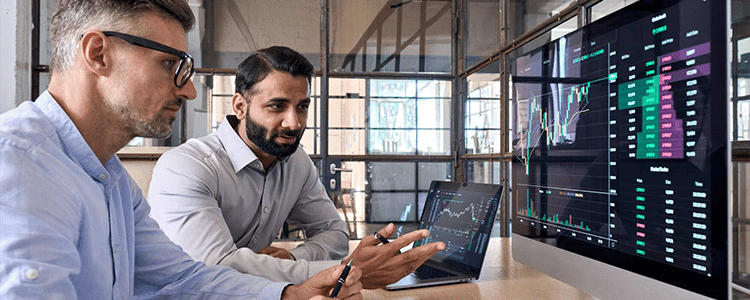As you’re evaluating ERP systems, you’ve probably realized the importance of cloud connectivity.
However, do you know which ERP vendors are at the forefront of cloud and SaaS technology? Which ones have already embraced emerging trends, and which are in the best position to embrace future trends?
The only way to know is to understand what these SaaS technology trends are to begin with. Then, you can determine which of your potential vendors are embracing the trends that matter most to your business. Today, we’re taking a look at the top trends you need to know.
Top SaaS Technology Trends
A Rise in Different Cloud Computing Models
In 2023 and beyond, we can expect a shift away from a one-size-fits-all version of the cloud. Today, companies are reviewing all their options and choosing what makes the most sense for their business. This means exploring the full suite of options, including:
• Software-as-a-Service (SaaS)
• Platform-as-a-Service (PaaS)
• Infrastructure-as-a-Service (IaaS)
Each option has its pros and cons to consider.
For instance, while SaaS offers companies complete, immediate service, its out-of-the-box features are often limited in scope. For businesses seeking more customization, PaaS can be more appealing. With PaaS, companies can build custom applications that live and operate on the cloud.
The 2025 ERP Report
72.6% of respondents said they've already deployed AI at their organizations. Learn about AI adoption and other ERP trends by downloading our latest report.
Artificial Intelligence on the Rise
Artificial intelligence (AI) continues to take the world by storm, and this includes the SaaS industry.
While its benefits are far-reaching, one of the biggest advantages that AI provides is the ability to hyper-personalize the customer experience.
Whether a business is set up as a B2B, B2C, or DTC model, customization and personalization are key. Consumers want to know that they matter to a brand, and AI helps brands meet that need. Not only can account managers use AI to quickly access buyer data, but they can also harness these insights to enable:
• Higher-quality support services (e.g. chatbots)
• Faster security breach identification
• Easier code reviews
• More accurate, dynamic pricing
This year and beyond, we can expect to see a major uptick in SaaS solutions that are integrated with AI features and technology.
An Increase in Vertical SaaS
A vertical SaaS solution is one created specifically for a certain industry, such as the retail or insurance sector.
This year, more vertical SaaS apps are emerging that are designed to cater to a very targeted audience. Much more economical than building software from scratch, SaaS makes customized software solutions accessible for smaller companies.
For instance, if you need an accounting solution for your saltwater pool business, you could hire a big-name vendor to develop a custom product for you. Yet, this investment could set you back thousands of dollars. With a SaaS solution, you can receive the same product but only pay a fraction of the price.
Unprecedented Growth of Machine Learning
As we move into 2023, we can expect to see a greater number of SaaS platforms with built-in machine learning (ML) features. This will enable:
• The ability to learn about each customer’s preferences and needs
• Easier internal communication and collaboration
• Improved customer engagement
• The ability to organize vast amounts of contextual data for decision-making and market positioning
ML allows SaaS systems to improve themselves over time. In turn, this leads to more efficient operations.
As ML becomes a key part of AI-assisted SaaS, we expect that companies will want to harness greater control over their ML software. This will create a greater need for Machine Learning as a Service (MLasS).
Early adopting providers are already using MLaaS to perform many different functions, including:
• Data preprocessing
• Data visualization
• Natural language processing (NLP)
• Facial recognition
• Predictive/preventative analytics
While the results are leveraged in-house, the actual computation takes place at the MLaaS provider’s off-site data center. This helps ensure accuracy and eliminates bias.
Leverage These Top SaaS Technology Trends
The SaaS space is rapidly changing. Can your organization keep up?
If you’re still relying on outdated tech to power your business, it’s time to consider these SaaS technology trends. As you research possible solutions, we’re here to help you make an informed decision. Contact our independent ERP consultants below to tell us what you’re looking for in a SaaS platform.













